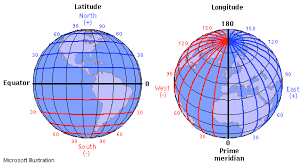 Genealogists have always been taught to record our sources of information. We not only record the name of the book or other source of genealogy information, but we also record the location of the building (repository) where we found it. Typically we record the building’s name, street address, city and state.
Genealogists have always been taught to record our sources of information. We not only record the name of the book or other source of genealogy information, but we also record the location of the building (repository) where we found it. Typically we record the building’s name, street address, city and state.
With today’s technology, shouldn’t we also be recording the geographic coordinates? With GPS receivers and the plethora of high-quality on-line maps, it is now easy to find the exact latitude and longitude of any address. Unlike street names, the longitude and latitude will never change.
I have written about finding cemeteries and other locations of genealogical interest by using GPS receivers. Shouldn’t we be recording the exact latitude and longitudes of those cemeteries into our genealogy databases? Perhaps the cemetery’s location alone isn’t enough. Should we record the exact location of the ancestor's tombstone.
How about the location of great-great-grandfather’s farm? I believe the latitude and longitude of that farm would be a valuable entry in your database so that future genealogists who have access to your data can find that farm’s location, even if it has since become covered with weeds or perhaps become a high-rise apartment building. In short, I think we should record the geographic coordinates of every location in our genealogy databases.
You can enter the latitude and longitude of any location as a text note into most any modern genealogy program. However, several of the better genealogy programs have specific database fields for these coordinates.
If you own a GPS receiver, the next time you visit an ancestral site of any sort, you should record its geographic coordinates into your database. You can also find similar information by consulting topographic maps.